Uses of Eastern Red Cedar
What Is Eastern Red Cedar Used For? Top 8 Amazing Uses
Discover "What is Eastern red cedar used for?" to know this captivating evergreen that's more than just a pretty sight. This remarkable tree has a long history of practical uses that extend beyond its striking appearance. From its beautifully grained, durable wood to its aromatic and insect-repellent properties, the Eastern Red Cedar is an unsung hero of the plant kingdom. Join us as we delve into the fascinating applications of this marvelous tree, exploring everything from woodworking masterpieces to natural remedies and culinary delights!
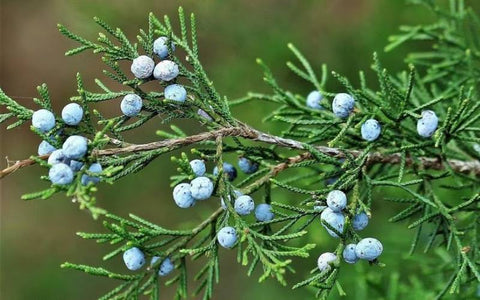
What Is Eastern Red Cedar Used For? Top 8 Amazing Uses
1. What’s Eastern red cedar? How does it look?
2. What is Eastern red cedar used for?
2.1 Woodworking and carpentry
2.2 Aromatic and moth-repellent properties
2.3 Fence posts and outdoor structures
2.4 Landscaping and wildlife habitat
2.5 Traditional and cultural uses
2.6 Erosion control
2.7 Windbreaks and shelterbelts
2.8 Firewood
3. Is Eastern red cedar edible?
4. Can you make tea from Eastern red cedar?
5. Conclusion
1. What’s Eastern red cedar? How does it look?
Eastern Red Cedar (Juniperus virginiana) is a fascinating juniper species native to eastern North America. This evergreen tree is characterized by its dense, pyramidal, or columnar form, and while it's called a cedar, it is actually a juniper.
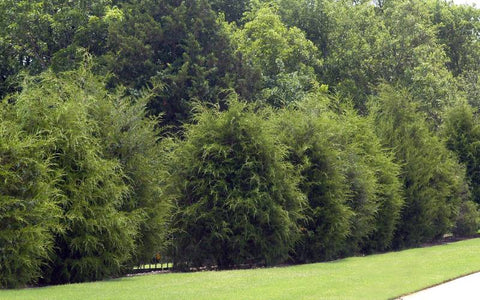
Cedars can thrive in various environments, including open woods, glades, and pastures. They can grow up to 40-50 feet tall, but some specimens may reach up to 90 feet. So they also make an excellent addition to shade your home gardens, and you can learn more about how to grow them here.
2. What is Eastern red cedar used for?
Discovering the uses of these cedars will help you not miss them the next time you see them. Here are the most common ways to utilize their parts:
2.1 Woodworking and carpentry
Many people ask “Is Eastern red cedar good wood?”, so the answer is here. The cedar's reddish, straight-grained wood is both durable and visually appealing, making it a favorite material for woodworking and carpentry projects. Its natural resistance to decay and insects lends itself well to furniture, cabinetry, and decorative items, while its pleasant aroma adds an extra layer of charm.

2.2 Aromatic and moth-repellent properties
The distinctive scent of Eastern Red Cedar wood is more than just enjoyable; it also has practical benefits. Its natural oils help repel moths and other insects, making it a traditional choice for lining closets and drawers. Cedarwood chips or blocks can also be used to protect stored fabrics from pests.
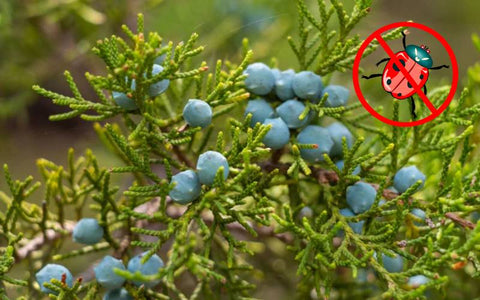
2.3 Fence posts and outdoor structures
Cedar's rot-resistant wood is perfect for outdoor structures like fence posts, pergolas, gazebos, and garden beds. Its ability to withstand harsh weather conditions and resist decay makes it an ideal material, requiring minimal maintenance.

2.4 Landscaping and wildlife habitat
Landscaping projects often feature Eastern Red Cedar trees for their visual appeal and ability to provide privacy screens or windbreaks. They can be planted individually or grouped to create a dense, natural barrier. Additionally, the trees offer valuable habitat and food sources for various wildlife, such as birds and small mammals. The tree's berry-like cones are particularly enticing to birds, which help disperse seeds and propagate new growth.
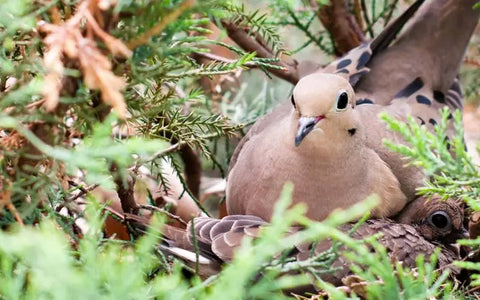
2.5 Traditional and cultural uses
Eastern Red Cedar has long been utilized by Native American tribes for its medicinal and spiritual properties. The tree's branches, bark, and berries have been employed in treating various ailments, including coughs and fevers. The aromatic wood also plays a role in traditional ceremonies, where it is burned as incense to cleanse and purify spaces and people.
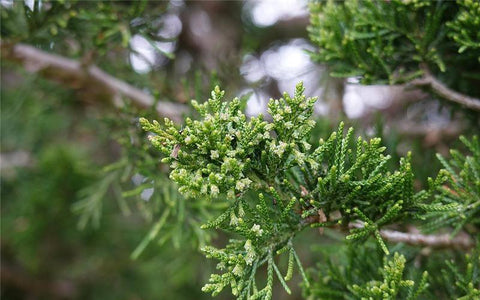
2.6 Erosion control
Cedar trees are effective in preventing soil erosion, particularly in areas with steep slopes or loose soil. Their root systems hold the soil in place, reducing the risk of erosion from wind and water.
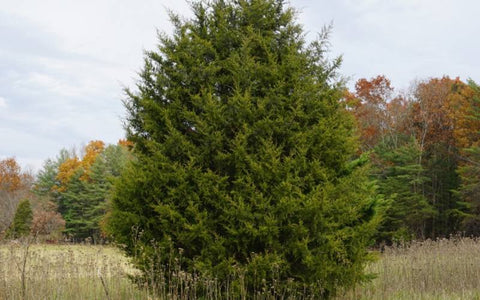
2.7 Windbreaks and shelterbelts
Eastern Red Cedars can be planted as windbreaks or shelterbelts to reduce wind speed and soil erosion on agricultural land or near buildings. They also help in conserving energy by reducing the cooling effects of wind on nearby structures.
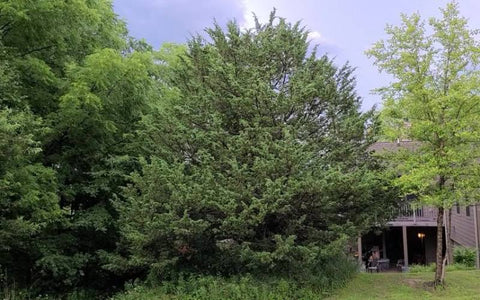
2.8 Firewood
While this cedar may not be the best choice for firewood due to its high resin content, it can still be used in outdoor fire pits or for kindling, as it ignites easily and burns with a pleasant aroma.
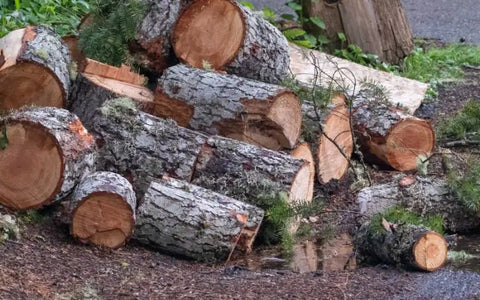
3. Is Eastern red cedar edible?
Yes, it is edible.
Red Cedar Juniper may not be a traditional food source, but its blue and berry-like cones, often called "juniper berries," have found a place in culinary pursuits. Generally safe in small amounts, these berries should not be mistaken for other juniper species, which can be toxic. Also, you should learn the difference between Eastern and Western red cedar.
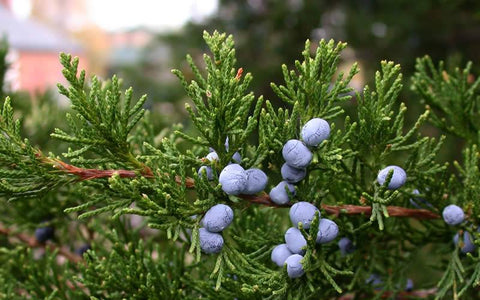
A popular spice in European cuisine, juniper berries are essential for flavoring dishes like sauerkraut and game meats. They also give gin its characteristic taste. When it comes to tea, the leaves, berries, or twigs of the cedar can be brewed into a herbal infusion.
4. Can you make tea from Eastern red cedar?
Creating a soothing cup of cedar tea is a simple process, but it's important to take the necessary precautions.
- Start by gathering fresh leaves, berries, or small twigs from a properly identified Eastern red cedar tree in a clean area free of pollution or pesticides.
- Thoroughly rinse the plant material under running water and chop the twigs into smaller pieces if using them.
- Add a small amount (about 1-2 teaspoons) of prepared material to a teapot or heat-resistant container.
- Pour boiling water over the leaves, berries, or twigs, and let it steep for 10-15 minutes.
- Strain the tea into a cup, discard the plant material, and add honey or lemon to taste, if desired.
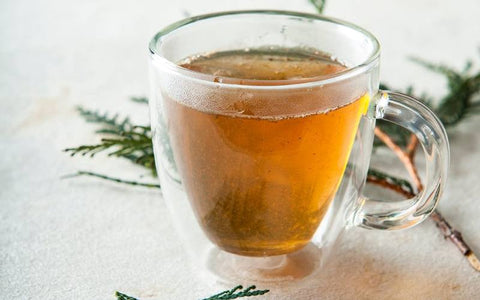
As you enjoy the tea, sip slowly and savor the flavors. Begin with a small serving to ensure you don't experience any adverse reactions. Caution is crucial when consuming this tea, as excessive amounts may cause gastrointestinal issues or kidney irritation. Pregnant individuals and those with kidney problems should avoid juniper products.
Traditionally, Eastern Red Cedar tea has been used for its potential medicinal benefits, such as alleviating coughs, soothing upset stomachs, or acting as a mild diuretic. However, scientific evidence is limited, so it's best to consult with a healthcare professional before using herbal tea as a remedy.
5. Conclusion
So, now you know "What is eastern red cedar used for?". We bet you are quite amazed at its uses, from wood, ornamental plants, and hedges to animal food, tea, and medicine. However, if you are taking it for treatment or drinking, start with very small amounts and watch for its effects on the body. If you need high cedars in your garden to see or use, start by ordering cedar tree seeds here.





Leave a comment